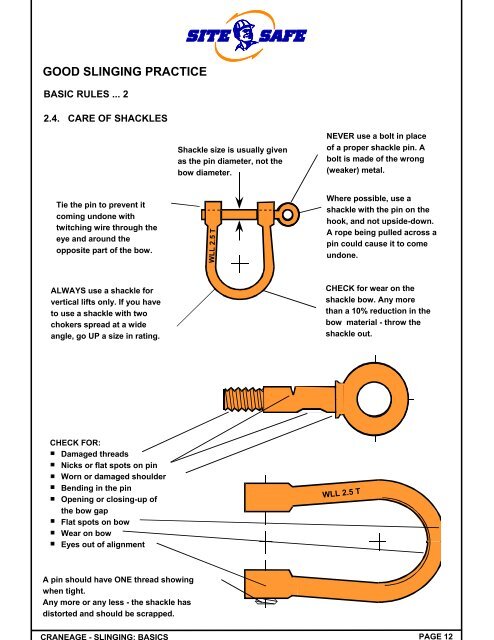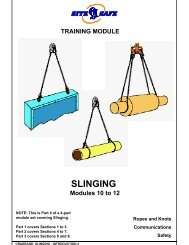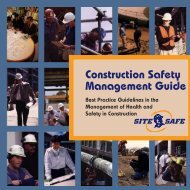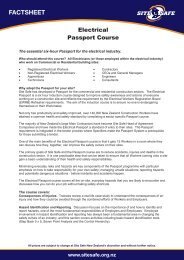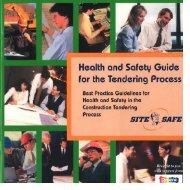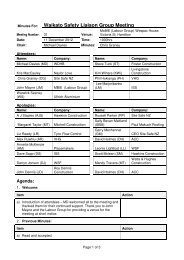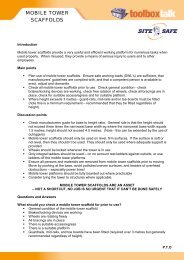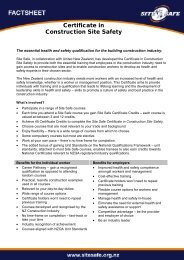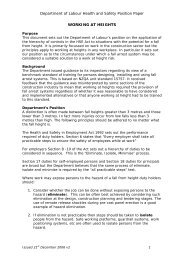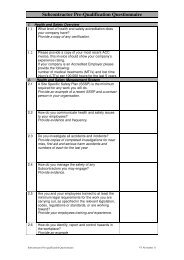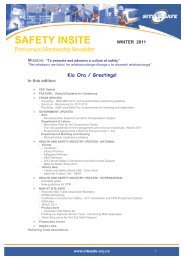You also want an ePaper? Increase the reach of your titles
YUMPU automatically turns print PDFs into web optimized ePapers that Google loves.
CRANEAGE - SLINGING: BASICS PAGE 12<br />
GOOD SLINGING PRACTICE<br />
BASIC RULES ... 2<br />
2.4. CARE OF SHACKLES<br />
Shackle size is usually given<br />
as the pin diameter, not the<br />
bow diameter.<br />
NEVER use a bolt in place<br />
of a proper shackle pin. A<br />
bolt is made of the wrong<br />
(weaker) metal.<br />
Tie the pin to prevent it<br />
coming undone with<br />
twitching wire through the<br />
eye and around the<br />
opposite part of the bow.<br />
WLL 2.5 T<br />
Where possible, use a<br />
shackle with the pin on the<br />
hook, and not upside-down.<br />
A rope being pulled across a<br />
pin could cause it to come<br />
undone.<br />
ALWAYS use a shackle for<br />
vertical lifts only. If you have<br />
to use a shackle with two<br />
chokers spread at a wide<br />
angle, go UP a size in rating.<br />
CHECK for wear on the<br />
shackle bow. Any more<br />
than a 10% reduction in the<br />
bow material - throw the<br />
shackle out.<br />
CHECK FOR:<br />
Damaged threads<br />
Nicks or flat spots on pin<br />
Worn or damaged shoulder<br />
Bending in the pin<br />
Opening or closing-up of<br />
the bow gap<br />
Flat spots on bow<br />
Wear on bow<br />
Eyes out of alignment<br />
WLL 2.5 T<br />
A pin should have ONE thread showing<br />
when tight.<br />
Any more or any less - the shackle has<br />
distorted and should be scrapped.


